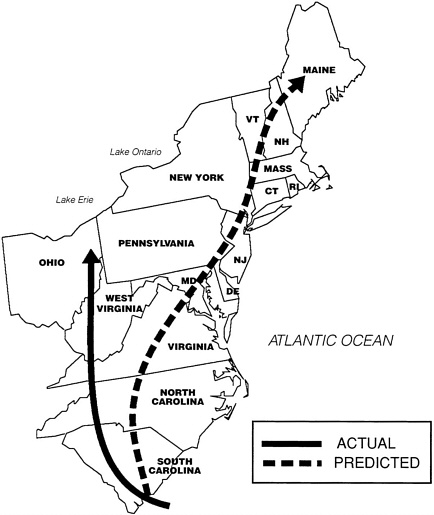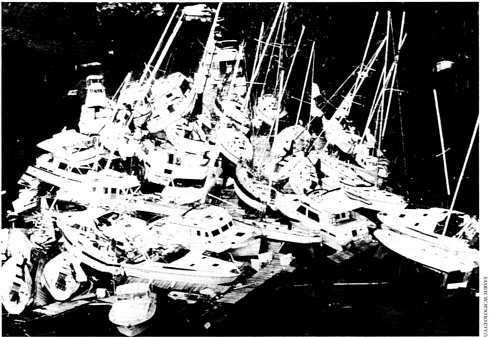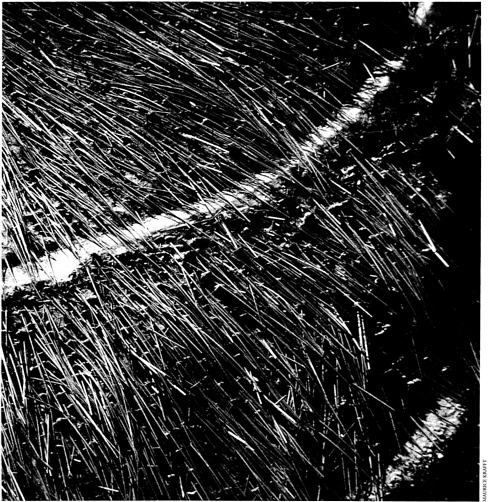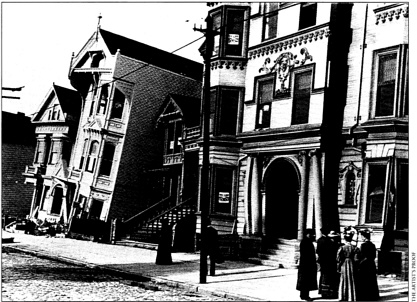Natural Calamities Essay Pdf Free Download
Visit NAP.edu/10766 to get more information about this book, to buy it in print, or to download it as a free PDF.
« Previous: 5. Preparedness for Emergency Response, Recovery, and Reconstruction
Suggested Citation:"6. Prediction and Warning." National Research Council. 1991. A Safer Future: Reducing the Impacts of Natural Disasters. Washington, DC: The National Academies Press. doi: 10.17226/1840.
×
CHAPTER 6
PREDICTION AND WARNING
Good predictions and warnings save lives. With only a few minutes' notice of a tornado or flash flood, people can act to protect themselves from injury and death. Predictions and warnings can also reduce damage and economic losses. When notice of an impending disaster can be issued well in advance, as it can for some riverine floods, wildfires, and hurricanes, property and natural resources can be protected.
Hurricane Hugo illustrates the benefits of an effective natural hazards warning system. Without successful prediction, warning, and evacuation, the loss of life could have reached the thousands, but actual deaths numbered 28. By contrast, when a hurricane struck Galveston, Texas — which had no warning system — on September 8, 1900, 6,000 people were killed and 5,000 injured.
Scientific and technological advances in recent decades have greatly improved the nation's capability to predict most natural hazards and disseminate warnings based on those predictions. However, prediction accuracy and lead times vary with the type of hazard. Prediction capabilities for atmospheric and hydrologic events are generally more advanced and specific than those for their geologic counterparts.
The federal government operates several systems to monitor natural hazards and make predictions. For example, an extensive weather monitoring and forecasting network covers the nation. Warnings are disseminated through a joint public-private partnership. Continuous radio and television broadcasts make both routine weather forecasts and severe weather warnings accessible to everyone. Televised weather programs have improved through the use of meteorologists and advanced presentation technology. Wildfire potential is closely monitored, and newspapers such as USA Today publish maps of daily and weekly fire danger. A system of observatories monitors volcanoes in Alaska, Hawaii, and Washington and issues warnings that have led to evacuation of surrounding areas, rerouting of air traffic, and other actions.
The technological capabilities for prediction are considerably better than social and organizational capabilities to disseminate warnings. For example, warnings of an impending natural hazard may not reach all potential victims. A concerted effort is needed to improve dissemination networks and the content of warning messages.
The Committee recommends that the nation expand and intensify its programs to improve prediction of significant natural hazard events and to ensure the effective and timely dissemination of warnings to all sectors of society.
To achieve this goal, the Committee proposes:
-
the upgrading of natural hazard prediction and warning systems through application of state-of-theart science and technology;
-
augmentation of research programs on the basic physical and biological processes of natural hazards, models to predict their occurrence, and technology to detect and monitor them and to disseminate warnings; and
-
expansion of research on the social aspects of effective warning messages.
Suggested Citation:"6. Prediction and Warning." National Research Council. 1991. A Safer Future: Reducing the Impacts of Natural Disasters. Washington, DC: The National Academies Press. doi: 10.17226/1840.
×

Figure 3. PREDICTED AND ACTUAL PATH OF HURRICANE HUGO
The track of Hurricane Hugo on September 22, 1989, was more westerly than expected because the storm came ashore faster and at greater intensity than had been forecast. Although prediction capabilities for meteorological hazards have increased in recent decades, further research and modernization of weather prediction facilities should provide the accuracy and lead time critical to decisionmakers who need to activate evacuation plans. (Source: National Weather Service.)
PREDICTION
A program for enhancing the nation's capability to predict atmospheric, hydrologic, and geological hazards should include:
-
Modernization of the weather prediction system. New observation and information technologies can improve the prediction of severe weather, floods, wildfire potential, and other weather-related hazards. NWS is currently deploying several new systems that will improve detection and prediction of severe weather and flooding. (See Figure 3.)
The observation systems being implemented as part of the modernization include advanced geostationary and polar orbiting satellites, doppler radars, automated surface observing systems, and doppler wind-profiling systems. Information systems include interactive computer, display, and storage systems for local weather stations and large central supercomputing facilities at national centers. These systems should be deployed by the National Oceanic and Atmospheric Administration (NOAA), the Department of Defense (DOD), and the Federal Aviation Administration (FAA) by the mid-1990s.
-
Research to improve the prediction of atmospheric and hydrologic hazards. Research is needed to increase understanding of the physical processes associated with the generation of severe storms and to develop advanced numerical models to predict their characteristics. With the NWS modernization, such a research program is scientifically and economically feasible. The effort would increase prediction accuracy and the lead time for flash floods, landslides, tornadoes, microbursts, and intense winter storms.
A coordinated national program involving the National Science Foundation (NSF), NOAA, the National Aeronautics and Space Administration (NASA), FAA, and DOD, with full collaboration of research laboratories, academia, and operational fore-
Suggested Citation:"6. Prediction and Warning." National Research Council. 1991. A Safer Future: Reducing the Impacts of Natural Disasters. Washington, DC: The National Academies Press. doi: 10.17226/1840.
×

Even with prediction capabilities, sometimes property damage cannot be avoided. Like so many fish washed up on a beach, this mixture of pleasure boats and fishing craft fell victim to the raging forces of Hurricane Hugo.
casters, should be initiated. Such a program offers an excellent opportunity for bilateral and multilateral cooperation with other nations during the IDNDR.
Predictions of where Hurricane Hugo would strike the coast were issued 24 hours in advance of the expected landfall, permitting orderly evacuation of the affected barrier islands and coastal areas. However, for Key West, New Orleans, Galveston, and other areas, 24 hours is not long enough. Longer lead times are generally beyond the capability of the existing hurricane prediction system. Consequently, there is a need for concentrated research to improve numerical models for predicting the track and intensity of hurricanes and, correspondingly, to improve the observational network spanning the Gulf of Mexico, the Caribbean, and adjacent parts of the Atlantic.
Among the federal agencies that should fund or undertake this research are NOAA and the Office of U.S. Foreign Disaster Assistance (OFDA). Because the same hurricanes strike the United States, Mexico,
Suggested Citation:"6. Prediction and Warning." National Research Council. 1991. A Safer Future: Reducing the Impacts of Natural Disasters. Washington, DC: The National Academies Press. doi: 10.17226/1840.
×

Response teams have to be trained to be ready at any time, often facing the worst conditions under the worst time constraints. Often, support for the rescue workers helps to keep operations under way.
the Caribbean, and Central America, joint efforts should be conducted with nations in the region. Collaboration with Japan and other Pacific Rim nations on numerical modeling may be useful.
-
Research on the impacts of disasters on natural resources. Disasters can have major impacts on natural resources. They may obliterate threatened and endangered species, inflict heavy damage on aquatic resources, flatten what might have been billions of board feet of timber, harm watersheds that supply major metropolitan areas, and damage air quality. Secondary impacts of natural disasters such as broken pipelines, streams blocked by debris, and emergency action to remove landslides can substantially increase damage to economically and environmentally important natural resources.
An expanded research program is needed to improve prediction and reduce these impacts. With improved prediction come better mitigation, response, and recovery strategies to protect or restore both the quality and quantity of renewable natural resources. USFS, the Department of the Interior (DOI), comparable state agencies, and universities should conduct research in this area.
-
Expanded earthquake monitoring and research. Reliable predictions and seismic zonation would permit individuals and communities to take actions that would reduce the devastation of ground shaking, landslides, and other physical effects.
Although long-term earthquake prediction is now possible in California, the ultimate goal must be predictions for the short (24-48 hour) and intermediate (6-12 month) terms. The former will make immediate self-protection actions possible, and the latter will permit communities to take mitigation actions preceding a major earthquake. To achieve this goal, monitoring and research are required. Extensive observations of physical factors that may change prior to a large earthquake are now being carried out mainly in the vicinity of Parkfield, California. Intensified monitoring networks should be established in other areas with a moderate-to-high probability of experiencing large earthquakes during the next 10-30 years. Among them are Southern California and the San Francisco Bay area, the Pacific Northwest, Nevada, the Wasatch Front in Utah, the New Madrid seismic zone in the Central Mississippi Valley, Charleston, South Carolina, the Northeast, and the Puerto RicoVirgin Islands region. Alaska, which experiences a magnitude 8 earthquake or greater approximately
Suggested Citation:"6. Prediction and Warning." National Research Council. 1991. A Safer Future: Reducing the Impacts of Natural Disasters. Washington, DC: The National Academies Press. doi: 10.17226/1840.
×
once each decade, should receive special attention.
In addition to predicting earthquakes, understanding their consequences is also important. Seismic zonation, which identifies how the ground is expected behave in specific locations during an earthquake, is one way to predict the consequences. The information provided by seismic zonation is useful to communities deciding on land-use planning, building codes, enforcement of construction practices, strengthening of existing buildings, and other mitigation strategies. Progress in seismic zonation can be accelerated through international cooperation. An international pilot study should be undertaken to select 10-20 countries expected to experience a damaging earthquake during the 1990s. These regions should be paired with earthquake-prone regions of the United States on the basis of analogous earthquake sources and soil conditions to develop cooperative seismic zonation projects.
-
Monitoring of volcanoes. The unique record of each volcano's activity makes prediction of impending eruptions difficult without research and extensive monitoring. In the United States, the Hawaiian Volcano Observatory has for years monitored volcanic seismicity, swelling and rifting, outgasing, and changes in local electrical and magnetic fields as precursors of eruptions. During the 1980s, the Cascades Volcano Observatory and the Alaska Volcano Observatory began monitoring high-risk volcanoes in the Pacific Northwest. These efforts should be extended to additional Alaskan volcanoes.
Because eruptions of any one volcano or of volcanoes in any one country are too infrequent to reveal all potential precursors and hazards, intensive multidisciplinary, multinational study of selected high-risk volcanoes should be undertaken.
WARNING
A program for enhancing the nation's capabilities for the dissemination of warnings should include:
-
Public-private partnerships for dissemination of warnings. Because of their universality, radio and television broadcasts are particularly effective in issuing warnings. Recognizing this potential, the broadcast media have arranged to disseminate NWS severe weather and flood warnings. The Emergency Broadcast System can be activated in virtually any emergency. Meteorologists at most television stations and some radio stations ensure the quality and timeliness of predictions. The 24-hour cable-television weather channels provide continuous national and local weather coverage. NOAA Weather Radio broadcasts continuous weather and flood information across the country.
Despite the many successes in public-private partnerships for dissemination of warnings, several problems remain. Radio and television programming is not always interrupted when emergency messages are released, and the vast broadcast range of cable television makes it a difficult medium through which to issue local warnings.
The current partnership should be extended to facilitate the dissemination of warnings for all natural hazards. The feasibility of modifying NOAA's Weather Wire and Radio Systems to include additional hazard types should be explored by NOAA, the U.S. Geological Survey (USGS), USFS, and other agencies. Weather broadcasters should be trained to interpret and present any new hazard information. Further, present gaps in the dissemination system should be examined through joint efforts of the media and federal agencies, including the Federal Communications Commission.
-
New technologies for dissemination of warnings. The ideal warning system would ensure that all potential victims are alerted to an incipient disaster as quickly as possible, irrespective of the time or their location. Present systems often alert people unnecessarily and generally do not reach those who are asleep or out of range of the electronic media.
New technologies could solve some of these problems — special tone alerts such as those provided by NOAA Weather Radio that activate radio receivers only in the areas where a natural hazard has been predicted; the capability to send specifically addressed information using satellite communications to designated emergency management officials; an alert broadcast capability built into the local telephone network to provide a special ring accompanied by a recorded alert message to all telephones in a designated geographic area; and localized television displays of predicted severe weather and flooding. Attention should be given to developing and using sensors that automatically trigger warning systems; in the Swiss Alps, for example, thin wires stretched across avalanche-prone slopes are broken by the first large movements of snow and ice, electronically triggering
Suggested Citation:"6. Prediction and Warning." National Research Council. 1991. A Safer Future: Reducing the Impacts of Natural Disasters. Washington, DC: The National Academies Press. doi: 10.17226/1840.
×

A side effect of volcanic explosions, billions of board feet of timber — and woodland habitat — are lost as the repercussion of eruption strips and flattens trees down the mountainside, leaving it looking like so many pick-up-sticks tossed by an angry child.
Suggested Citation:"6. Prediction and Warning." National Research Council. 1991. A Safer Future: Reducing the Impacts of Natural Disasters. Washington, DC: The National Academies Press. doi: 10.17226/1840.
×
red warning signals on vulnerable roads below. Incorporating these and other technologies into the U.S. warning system will require further public/private partnerships among telephone companies, the news media, manufacturers of electronics equipment, and federal agencies.
-
Research on behavioral response to warnings. When individuals and organizations respond to warnings, their behavior stems from the interaction of the type of message they receive, their confidence in the source, their knowledge of the risks they face, their fears for the safety of loved ones and possessions, and other factors. People may feel, for example, that the possibility of looters is more threatening than an approaching flood, although research shows that looting seldom occurs in community disasters.
Despite the body of knowledge from research on behavioral response to warnings, advanced studies are needed. A particular gap exists in understanding the response of people at manufacturing plants, offices, hotels, schools, sports stadia, and other places of public assembly. Many businesses are reluctant to close or let employees leave unless the threat is quite certain. The factors that move organizations to act on warnings need to be systematically ascertained.
In addition, perceptions of risk differ considerably among population sectors; cultural and economic factors appear to influence what individuals and organizations think they should do. Social research similar to that for nuclear and chemical hazards should be conducted on the risk perceptions of different segments of the U.S. population. With such information, warning messages could be tailored to particular groups.
-
Research on appropriate responses to warnings. What should individuals and organizations do to protect themselves and their property? Although considerable research has been conducted in this area, further study is needed. Is it always safer to evacuate than to stay at home when a hurricane threatens? How should the tourist population be considered in disaster planning? Should all businesses simultaneously release their employees, even when a massive increase in traffic will result? What are the special problems of warning and evacuating hospitals, prisons, nursing homes, dormitories, zoos, arenas and other places of public assembly, wilderness and other remote areas, large demonstrations, parades, and other holiday celebrations? The development of educational campaigns, models of organizational response, and warning message content would all be improved by a systematic study of these and related questions.
Warning messages need to elicit appropriate actions. But they do not always do so. To make warning messages more effective, further research is needed on typical responses to warnings and techniques for encouraging appropriate responses from individuals, households, organizations, and communities. This problem lends itself well to a progression from laboratory research to demonstration projects to large-scale comparative studies.
-
Improving the transmission of warning messages. Communication follows many complex paths from the first monitoring of a threat to transmitting the warning to acting on that warning at homes, work, and schools. A better understanding of the multiple communication networks, which involve a variety of public and private organizations, is needed. How do they work? What affects the information flow? Which entities are given more credence and legitimacy? Where are the blocking or distorting points?
Cable television, which now reaches more than one half of the households in the country, improves the technological capability to reach those who need to be warned. But there remains the problem of reaching cable viewers who are tuned to distant stations. Studies are needed to ascertain the magnitude of the problem and its consequences, the implications for community disaster planning, and approaches to the issue of local warnings.
Suggested Citation:"6. Prediction and Warning." National Research Council. 1991. A Safer Future: Reducing the Impacts of Natural Disasters. Washington, DC: The National Academies Press. doi: 10.17226/1840.
×

Disasters have been a part of life throughout history. San Francisco residents, circa 1906, examine the angle of list on a row of townhouses damaged in the famous magnitude 8.3 quake.
Next: 7. Learning from Disasters »
Posted by: hunghungmearfilea0251837.blogspot.com
Source: https://www.nap.edu/read/1840/chapter/8
Post a Comment for "Natural Calamities Essay Pdf Free Download"